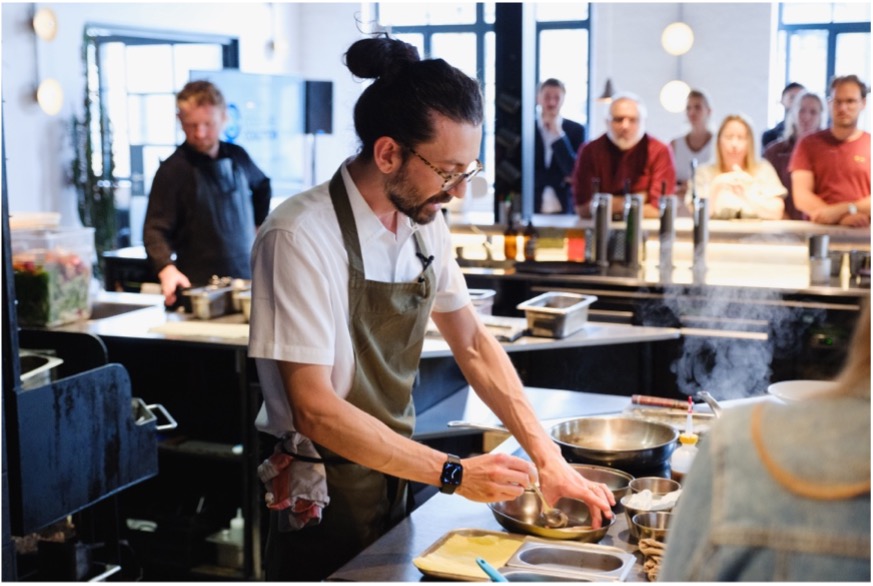The Respiratory Benefits of Electric Cooking
To mark World Asthma Day, discover how CLASP is promoting healthier, safer, and more efficient electric cooking appliances worldwide.
European Public Health Alliance
CLASP is collaborating with partner organizations and policymakers around the world to address the health and environmental impacts associated with open-flame cooking appliances, and increase the uptake of electric cooking.
CLASP research shows that gas and solid fuel stoves produce a cocktail of air pollutants within homes, posing significant risks to respiratory systems. These pollutants impact people and children with asthma more notably. However, the solutions already exist: transitioning to electric cooking appliances. Replacing open-flame stoves with cleaner, energy-efficient electric alternatives remains the healthiest and safest option available.
Addressing Gas Cooking
Cooking with gas emits a cocktail of pollutants, one of them, nitrogen dioxide (NO2), is formed when gas flames react with oxygen in the air. A recent CLASP study conducted in Europe found that levels of NO2 in households with gas cooking appliances often exceed WHO air quality guidelines. In fact, indoor air quality, particularly in gas-cooking households, can often be poorer than outdoor air quality.

CLASP is working with the European Commission to introduce NO2 limits into the Ecodesign standards that govern cooking appliances. More information on CLASP’s research and recommendations on gas and electric cooking in Europe can be found here.
Tackling Solid Fuel Cooking
In regions like Africa and South East Asia, millions rely on burning solid fuels, like coal, firewood, and biomass for cooking. This has significant health consequences.
“The evidence is clear: transitioning to electric cooking is a vital step towards protecting respiratory health and reducing air pollution. CLASP is fostering healthier homes and communities worldwide by promoting cleaner, safer, and more sustainable, energy-efficient cooking appliances, to make a tangible improvement on people’s lives.” Sam Grant, Senior Director of Clean Energy Access at CLASP
To mitigate the air pollution caused by cooking methods in Rwanda and Uganda, CLASP is encouraging the widespread adoption of affordable electric pressure cookers. In India, CLASP promotes the adoption of efficient induction cookstoves, as a cleaner alternative to traditional solid fuel cooking appliances.
Understanding the Respiratory Risks
Air pollution stands among the World Health Organization’s (WHO) top ten global health concerns. The WHO considers NO2 a dangerous air pollutant that can cause serious respiratory problems, including, “…bronchoconstriction, increased bronchial reactivity, air way inflammation and decrease in immune defense leading to increased susceptibility to respiratory infection.”

Those already suffering from asthma symptoms are particularly sensitive to the pollutants emitted by gas and solid fuel cooking appliances.
“Electric cooking is not just about preparing meals: it is about safeguarding our health. NO2 exposure, brief or prolonged, harms respiratory health. Studies indicate that switching to electric cooking could prevent as many as 700,000 children in Europe from developing asthma, making up 12% of all cases. Recognizing these risks, EPHA is mobilizing the public health community and advocating for policy changes that promote electric cooking, safeguard respiratory health, and ensure a healthier future for all.” Sara Bertucci, Policy Manager at the European Public Health Alliance
Clean Cooking Solutions
Both health and air quality experts recommend accelerating the transition to electric cooking. To minimize exposure to cooking pollutants, effective ventilation practices can be beneficial, but the ultimate solution is adopting plug-in electric appliances. Governments have a pivotal role to play by enforcing stricter appliance standards and incentivizing the widespread and equitable adoption of electric cooking appliances. Manufacturers and healthcare professionals should also inform people about the indoor air pollution linked with gas and solid fuel cooking appliances, as well as possible alternatives.
Collective action from policymakers, manufacturers, and healthcare professionals can ensure significant progress is made in reducing people’s exposure to cooking emissions and promoting respiratory health.









